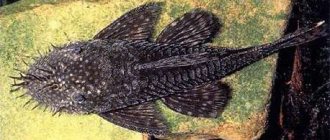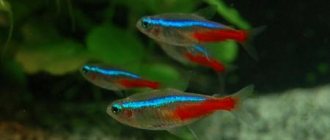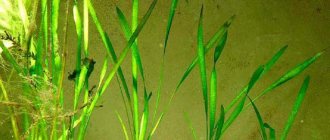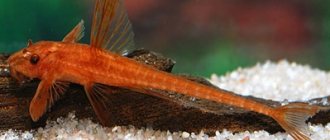If you decide to buy an aquarium, then the first fish you should buy is a catfish. They are very good orderlies who clean the bottom of mucus. There are a large number of species of aquarium catfish, the size of which can range from a few centimeters to a couple of meters. The structure of their body is quite unusual, which makes catfish a favorite of many aquarists. In order to introduce catfish into your aquarium, you must know what kind of care they require, the peculiarities of their maintenance and compatibility with other fish.
Shelters and caves for catfish
Representatives of this species love burrows, crevices and caves. For example, members of the genus Pterygoplichthys genus dig deep burrows in river banks, in which they hide during the day and leave at night to search for food. Sometimes they "borrow" burrows after other living creatures have left their hiding places.
Other species, for example, Hypancistrus zebra (L046), create cozy cells in which they lay eggs, and the fish use their bodies as protection from predators. Catfish Panaque sp. L204 dig up sand under wooden parts and create “dugouts” in which to hide. Each species of catfish uses terrain features to create shelters.
Shelters for fish made from natural building materials
Considering these natural tendencies, you need to put enough wood and stone inside the aquarium that will help the fish feel safe. Care should be taken when working with stones and heavy pieces of wood. Make sure the items are stacked securely. If a catfish begins to dig under a poorly secured flat stone, the natural element can crush the fish.
Small rounded stones placed in small groups will help create small shelters around the stones. In them, the fish will be able to find refuge in case of danger. Some species of catfish eat wood, so the use of driftwood also benefits the fish's taste preferences. By installing wooden supports under the stones, you can create a “house” with a roof, which will be cozy and safe for those hiding under its protection.
Clarias Angolan
When young, Clarias angolan is very similar to the sacbranch catfish. The main difference is the dorsal fin, which extends almost along the entire body. The natural color is brown, with small specks. The marble form often goes on sale. The body is light yellow with dark brown large “marbled” spots. This is a voracious predator for a large species aquarium. It can grow as thick and as long as a teenager's arm. The content is very simple - almost any water parameters. Omnivorous and very voracious.
Shelters for fish made from artificial materials
If you decide to use artificial decor, then there is no limit to perfection. One precaution is to use construction tools that will create enough free space for the catfish. Artificial structures can be dangerous for large specimens.
If a catfish falls into a trap due to the small size of the shelter, then you will have to try to get the fish out of the trap without damaging the integrity of the body. Zigzag decorative elements are easy to get into, but difficult to get out of. The safest way to create a refuge for catfish is to make artificial caves from long PVC pipes.
They may not be very aesthetically pleasing, but they serve an important purpose and, most importantly, are safe.
Conditions in spawning aquariums and their types
Aquariums made from solid glass or plexiglass are best for spawning. One should not forget about its hygiene; the aquarium must be well disinfected in order to avoid illness in the newly born fry.
For all types of aquarium fish during the spawning period, it is necessary to create the most suitable environment in the spawning aquarium. The chemical composition of the water should be as similar as possible to natural water, and small plants can be used in the water column to make the fish feel like they are in their natural habitat.
To breed aquarium fish at home, you need a properly prepared and manufactured spawning aquarium. And only thanks to good preparation, you can achieve success in breeding aquarium fish.
One last note about hiding places for aquarium inhabitants.
As the catfish grow, it may be necessary to “update” the size of the cave. It should be neat and compact, but not restrict movement.
By creating a safe place to “hide” with your own hands, you will see your favorite fish more often. Many species are "shy" when they feel they are being watched. Pisces refuse to eat, which negatively affects their overall health. If they have a shelter, then they will leave it more often, knowing that there is a secluded safe place where no one will see or find them.
Aquarium catfish: maintenance, care, compatibility, feeding, description, photo, video.
Care and maintenance
Keeping and caring for catfish is not a complicated process. are kept in normal aquarium conditions at a temperature of 22-28 ° C. Water hardness 6-12 . Acidity is neutral. If your acidity deviates a little in one direction or another, there is nothing to worry about. But it is very important that the water is not salty. Most species are not fussy about the oxygen regime, since catfish have skin respiration or the ability to breathe atmospheric air.
The breathing process consists of the catfish rising to the surface, taking in air and sinking to the bottom until the air is completely used up. The soil doesn't really matter. To make your catfish comfortable, you need to set up an aquarium for him. Since the catfish is a bottom inhabitant of the aquarium, it is necessary to make some kind of shelter for it.
It can be made from stone, different types of driftwood, it can be artificial houses, castles and plants. As for living plants, you need to look at the specific variety of catfish, since many of them are herbivores and the plant may not live with you for long. But still, if you want to plant plants in an aquarium, and your catfish is a herbivore, then you need to choose large plants with a well-developed root system. It is very important to create a territory for the catfish and place driftwood. Without such shelter, the catfish will not be comfortable and its life will be significantly shortened, and thanks to the snag, the catfish will receive important cellulose for life.
Preparing to buy an aquarium catfish
When deciding to purchase a pet, you should make the necessary preparations. By qualitatively researching the features of your pet’s lifestyle and hobbies, you can guarantee the acquisition of the necessary things.
Additionally, catfish are called “household orderlies” for their love of eating soil. The fish destroy scales and food waste from the bottom of the aquarium, thus maintaining the cleanliness of the reservoir.
High-quality cleaning of the aquarium is carried out by pet catfish, which is why the owner of the reservoir can forget about cleaning the aquarium. However, it doesn’t hurt to purchase a high-quality filter, since the fish get their food in an original way. They lift the settled remains from the surface of the bottom, moving their bodies; after the food begins to float, the catfish eat it.
When organizing repopulation in an aquarium, it is important to pay attention to the already established inhabitants of the reservoir. Not all fish get along with their new neighbors and can eat them. Guppies and neons are a favorite delicacy for catfish, so to avoid lethal consequences, the fish should be separated.
To create optimal conditions for catfish, it is necessary to fill the aquarium with stones or dense vegetation. These fish prefer to stay in shelter until it gets dark. During the daytime, they like to clean the bottom of the aquarium. However, catfish are not easy to see, as they have a special protective coloring and practically blend in with the stones.
Compatibility of catfish
Basically, catfish are peaceful, do not get into fights with other aquarium fish, and sometimes there are conflicts among themselves.
It happens that even a stronger catfish begins to chase the weaker one, and, alas, kills him.
But this is extremely rare. The compatibility of catfish with other fish depends on the type of catfish.
Peace-loving, herbivorous animals need to be matched with non-aggressive neighbors. And for predators - larger fish that can fend for themselves.
Reproduction and breeding
The breeding process for catfish is quite simple, and if you only have fish of this species in your aquarium, you don’t even have to put them in a separate aquarium. Otherwise, for catfish spawning, it is better to allocate a container with clean water with a capacity of 30 to 50 liters. Usually there are 3-4 males per female. It is very desirable that in the place where the spawning takes place there is a lot of algae and soft soil.
If you want to encourage your pets to reproduce, you need to change the water temperature within a few days within 17-25 ° C and aerate the aquarium. Spawning usually occurs early in the morning. When the eggs have already been laid, you can leave natural light or darken it a little. A week after spawning, the female will be ready for a new spawning. The fry develop quite quickly and almost immediately they can be fed with finely chopped bloodworms or “dust”.
Feeding
Feeding catfish is very easy. They eat up the fish food that lies on the bottom, thereby cleaning the bottom of the aquarium. They eat almost everything: pieces of fish, shrimp, tablets, frozen food, cereal, and since most catfish are predators, they can eat small fish in an aquarium, perceiving them as food.
Drawing a conclusion, we can say that catfish in an aquarium are the right fish. Unpretentious and does not require additional care, resistant to various diseases, and, well, very original and beautiful. Having a catfish, your aquarium will always look unique, and you will always be able to rejoice and enjoy the beauty of your pet.
In the following articles you will be able to find the most necessary information about the maintenance of aquarium catfish, the species that interest you, the variety of aquarium catfish, feeding, care, as well as tables of compatibility of catfish with other inhabitants of the aquarium.
"Orphans" of the aquarium
You can often hear from pet store sellers that small and large catfish clean the water in the aquarium and the owner does not have to do this. Catfish, combing the soil at the bottom, actually pick up everything edible, partially cleaning the pollution. By the way, this does not mean that your pet’s nutrition should be left to chance.
It is also important to note that the natural habitat of these fish is silted water. But this also does not mean that you can not clean the aquarium at all and only change the water occasionally. Increased aeration of the water is really not necessary, and clean water and an aquarium are the key to the health of your fish. If you also have other fish, they simply need cleanliness, and the catfish will quickly get used to it and will not experience any inconvenience.
General information about catfish
All types of aquarium catfish, of which there are a huge number in nature, are surprisingly similar in appearance. More than 1,200 thousand different waterfowl variations of this species live in aquariums alone. Otherwise, these fish are called cleaners, because they eat the remains of half-eaten, rotting food lying on the bottom.
And many amateurs purchase such “orderlies” precisely because of their accuracy. You can buy such interesting specimens at any pet store. These aquarium fish, instead of scales, have a lamellar covering consisting of bone tissue. This feature distinguishes them from other waterfowl. Catfish mainly live at the bottom of glass reservoirs and are active only at night. They feed on plant foods, but sometimes they do not hesitate to feast on the leftovers “from the master’s bottom table.”
Catfish are very popular among aquarists, so the demand for them is very high. They buy carapaces because they are: quite peaceful; feel excellent in water at temperatures from 18° +25°C; adapted to hard water; They feel confident with its average acidity with plus/minus deviations in different directions.
Nature has endowed catfish with intestinal respiration. Looking out of the aquarium, they swallow air with their mouths, which is then processed into pure oxygen. If a catfish often lingers near the surface of the water, it means that it is difficult for him to breathe. Aquarium orderlies











